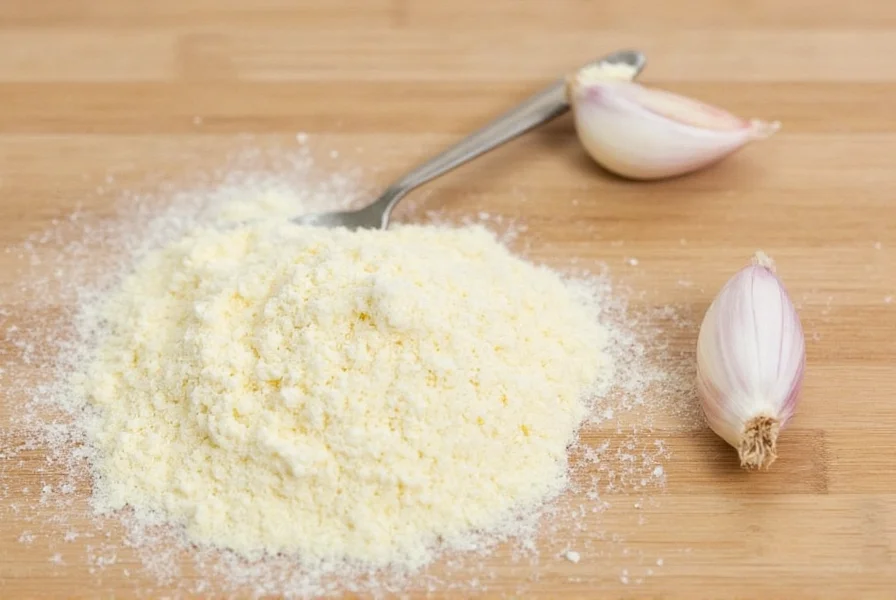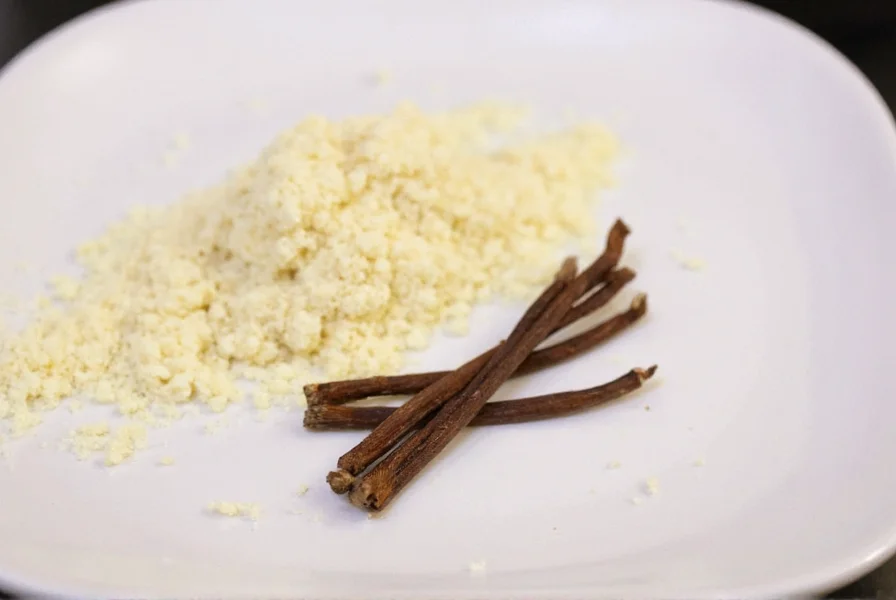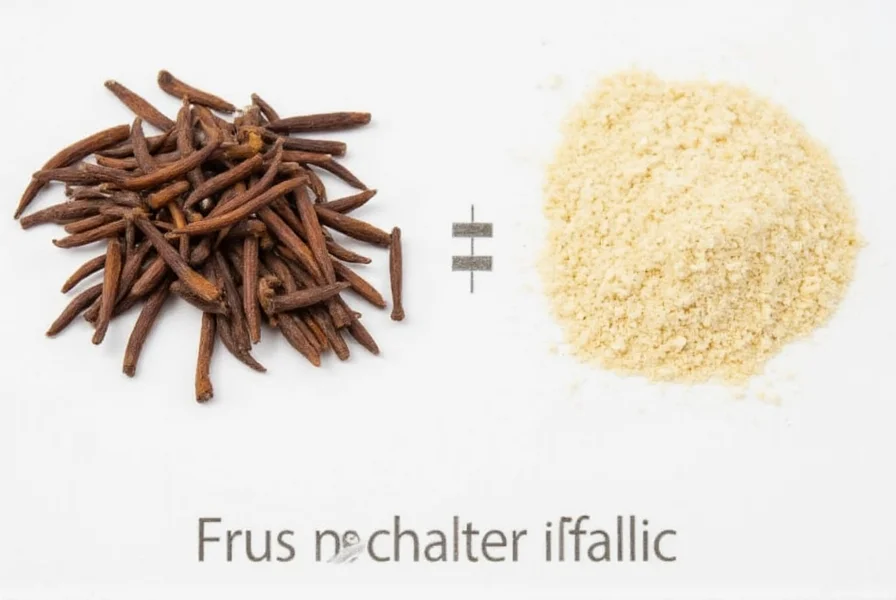When adapting recipes that call for fresh garlic, understanding the precise garlic powder to fresh garlic conversion becomes essential for maintaining flavor balance. Many home cooks and professional chefs face this substitution challenge regularly, especially when fresh garlic isn't available or when convenience is prioritized.
Understanding Garlic Powder Conversion Ratios
Garlic powder represents dehydrated, finely ground garlic that concentrates the flavor compounds. The 1:1/8 ratio (one clove to 1/8 teaspoon powder) works because the drying process removes moisture while intensifying certain flavor elements. However, several factors influence this conversion:
- Garlic variety - Different garlic strains have varying potency
- Powder quality - Freshness and processing methods affect strength
- Recipe type - Moisture content and cooking time impact flavor development
- Personal preference - Some prefer more or less pronounced garlic flavor
| Fresh Garlic | Garlic Powder Equivalent | Best For |
|---|---|---|
| 1 clove | 1/8 teaspoon | Most standard recipes |
| 3 cloves | 3/8 teaspoon | Sauces and marinades |
| 6 cloves | 3/4 teaspoon | Hearty stews and roasts |
| 10 cloves | 1 1/4 teaspoons | Strong-flavored dishes |
Practical Substitution Guidelines
For optimal results when replacing fresh garlic with garlic powder, consider these professional kitchen tips:
Add garlic powder early in the cooking process for soups, stews, and sauces to allow proper rehydration and flavor distribution. In dry rubs or spice blends, garlic powder integrates seamlessly without requiring moisture activation. When substituting in raw applications like salad dressings, mix the powder with a small amount of water first to create a paste that better mimics fresh garlic's texture.

When Fresh Garlic Outperforms Powder
While convenient, garlic powder doesn't replicate all characteristics of fresh garlic. For dishes where texture matters—like garlic bread or roasted garlic spreads—fresh remains superior. The enzymatic reactions that create allicin (garlic's primary flavor compound) differ between fresh and dried forms, resulting in subtle flavor variations.
Understanding how to substitute garlic powder for fresh garlic properly prevents common kitchen mistakes. Many novice cooks use equal volumes rather than following the proper ratio, resulting in either overpowering or undetectable garlic flavor. Remember that 1 teaspoon of garlic powder equals approximately 8 fresh cloves—a critical distinction when scaling recipes.
Advanced Substitution Techniques
For chefs seeking more nuanced control, consider these professional approaches to garlic powder conversion for recipes:
- Gradual addition - Start with 1/16 teaspoon per clove, then adjust to taste
- Rehydration method - Mix powder with equal parts water to create garlic paste
- Layered flavoring - Use powder for base flavor, finishing with fresh for brightness
- Acid activation - Combine with lemon juice or vinegar to enhance flavor release
When working with international recipes, note that garlic powder equivalent to one clove may vary slightly by culinary tradition. Mediterranean and Middle Eastern cuisines often use more garlic than East Asian recipes, so adjust accordingly based on the dish's origin.

Storage and Quality Considerations
The shelf life of garlic powder significantly impacts its potency. Properly stored in an airtight container away from light and heat, quality garlic powder maintains optimal flavor for 18-24 months. Older powder may require slightly increased quantities to achieve the same flavor intensity as fresh product.
When selecting garlic powder, choose products with consistent particle size and no visible clumping, which indicates moisture exposure. Premium brands often specify the garlic variety used, with Silverskin and Artichoke types providing different flavor profiles suitable for various culinary applications.
Common Substitution Mistakes to Avoid
Many home cooks make these errors when converting fresh garlic to powder:
- Using equal measurements instead of the proper ratio
- Adding powder too late in cooking, preventing proper flavor development
- Not adjusting for recipe moisture content
- Using old or low-quality powder with diminished flavor
- Substituting in applications where fresh garlic's texture is essential
By understanding the precise how much garlic powder equals one clove relationship and these contextual factors, you'll achieve consistently excellent results whether adapting family recipes or experimenting with new culinary creations.
Frequently Asked Questions
Can I use garlic salt instead of garlic powder in the same ratio?
No, garlic salt contains approximately 3 parts salt to 1 part garlic powder. For substitution, use 1/4 teaspoon garlic salt per 1/8 teaspoon garlic powder, and reduce other salt in the recipe accordingly.
Does the size of the garlic clove affect the conversion ratio?
Yes, the standard ratio assumes a medium clove (about 1 inch long and 1/2 inch in diameter). For small cloves, use 1/16 teaspoon powder; for large cloves, use 3/16 teaspoon. Adjust based on your specific garlic size.
How does roasted garlic compare to garlic powder in substitution?
Roasted garlic has a milder, sweeter flavor than both fresh and powdered garlic. One roasted clove equals approximately 1/4 teaspoon garlic powder, but the flavor profile differs significantly due to caramelization during roasting.
Can I substitute fresh garlic for garlic powder using the reverse ratio?
Yes, 1 teaspoon of garlic powder equals approximately 8 fresh garlic cloves. When substituting fresh for powder, mince or press the garlic finely and add it earlier in the cooking process to allow proper flavor development.
Why does my garlic powder substitution taste different than fresh garlic?
Garlic powder lacks the enzymatic reaction that creates allicin in fresh garlic when cut or crushed. This results in a more consistent but slightly different flavor profile. For closer approximation, mix powder with a few drops of water or acid (lemon juice/vinegar) before adding to recipes.











 浙公网安备
33010002000092号
浙公网安备
33010002000092号 浙B2-20120091-4
浙B2-20120091-4